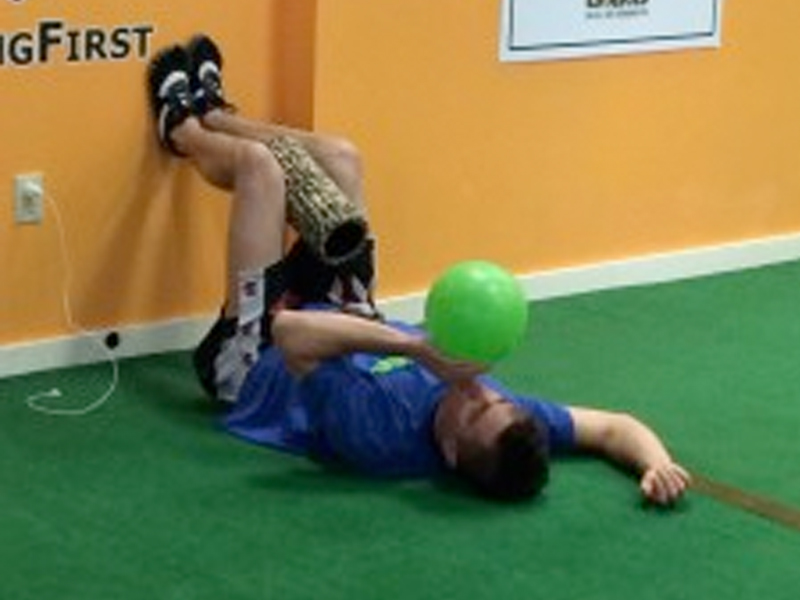Do not be tense, just be ready, not thinking but not dreaming, not being set but being flexible. It is being “wholly” and quietly alive, aware and alert, ready for whatever may come.
-Bruce Lee
Just like strength, relaxation is a skill. It’s a vital skill that is vastly overlooked in the strength and conditioning world.
A little story for ya…
If you haven’t heard of Bud Winter, here is a little background. Bud is regarded as one of the greatest sprint coaches to ever live. He was a great track and field coach, but his ability to teach his athletes to relax was game-changing.
Around the time of early World War II, Bud was hired as Chairman of a research program in relaxation at Del Monte Pre-Flight School for the Navy. Many of the aviators at that time were cracking under pressure at the school and this was even before real bullets were flying.
Later, in their first combat, some of them “froze” mentally, physically or both. They lost a man and a plane . Hence a mandatory program was created that would teach all cadets how to relax under pressure. Once they got going they found that in all sports and highly specialized skills, such as aviation, the greatest enemy to peak performance was hyper-tension (not blood pressure related).
How does this apply to athletic performance?
If you have ever competed in any sport you probably remember those days when it all clicked. You couldn’t miss, every decision was perfect and making a mistake just wasn’t in the cards. Everything seemed to slow down and you had sniper-like focus. I have been there and it’s an amazing feeling. Looking back to when I competed, I can now see that the days I was at my best were those days when I was relaxed, maybe even distracted, until game time. I wasn’t overly focused on the game, just ready to play. I didn’t know it at the time, but I had the perfect balance of tension and relaxation.
So how do you relax before training?
 I use this sequence when I practice the 5 minute snatch test and it works incredibly well. Give it a try before snatching or any workout.
I use this sequence when I practice the 5 minute snatch test and it works incredibly well. Give it a try before snatching or any workout.
Diaphragmatic Breathing
Here are a few key points:
- Keep your lips closed and breath with your nose only
- Keep your tongue on the roof of your mouth
- Be sure that your teeth are apart and not clenched
- Breathe into your belly (your stomach should rise and fall as your fill your diaphragm with air)
Start with 2-5 minutes of diaphragmatic breathing.
Fast and Loose
“Shake the meat off the bone.” Let your muscles flop around. Be the opposite of tense. Let your calves, quads, arms be relaxed. Shake your hands out as if you are trying to get water off them. Shake your feet as if you just stepped in dog poop and you want to get it off.
Practice 2-3 minutes of fast and loose.
Reach and Fall
Reach as high as you can to the sky, stretching your whole body out. Inhale as you reach. Exhale all of your air and collapse your body. Don’t actually fall over, but finish in a goblet squat-like position.
Do 5 of these.
Heel Drops
These are something I came up with (or at least I think I did).
As you inhale, drive up on your tip toes. Exhale and perform 4-6 heel drops. Let the heel drop push the air out of you. stay relaxed and let each strike of the ground push the air out.
Do 3-5 sets.
Relax the Jaw
Recent research has suggested a link between clenching of the teeth and the release of cortisol (the stress hormone). The current thinking is that as the teeth are clenched there is compression of the temporomandibular joint (TMJ). This compression signals the hypothalamus which then triggers the excess production and release of a cascade of hormones including cortisol. Cortisol is the hormone released in the “fight or flight” response.
If you can prevent your teeth from clenching together by dropping your jaw down and forward (putting a measured space between the teeth), it will relieve pressure on your TMJ. This changes the signal to the hypothalamus, preventing the excessive production of hormones (including cortisol), thereby preventing any performance-diminishing effects.
Open your mouth, keep your jaw loose and slightly forward. Move your jaw around through a comfortable range of motion. Don’t force anything and just relax. You can even open your mouth and shake your head side to side lightly and let the jaw float.
Practice for 1 minute.
This stuff works, but, like anything, relaxation is a skill that needs to be practiced.
Try this out and let me know what you think!


Tremendous, concise advice. There are many grapplers and strikers who take to yoga for this precise purpose. And even participants of more popular contact sports are appreciating the notion of chilling out before a game, rather than trying to get all fired up. Well done.
Thx for the comment JF! The majority of MMA training has a sympathetic “fight or flight” tone to it. There is nothing wrong with that, but it’s like having your foot on the gas pedal the whole time, eventually something will give out! Breathing and relaxation drills do the opposite, they activate the parasympathetic nervous system ( rest and digest ) and help keep things balanced. This is vital to performance!!
Thx again and I’m glad you liked the post!!
Top stuff, mate! These have helped tremendously at work (which entails public speaking)
Would you happen to have any further techniques/ drills for boxers and sprinters? Something about maintaining speed/ relaxation while in motion.
Kind regards,
Hugh